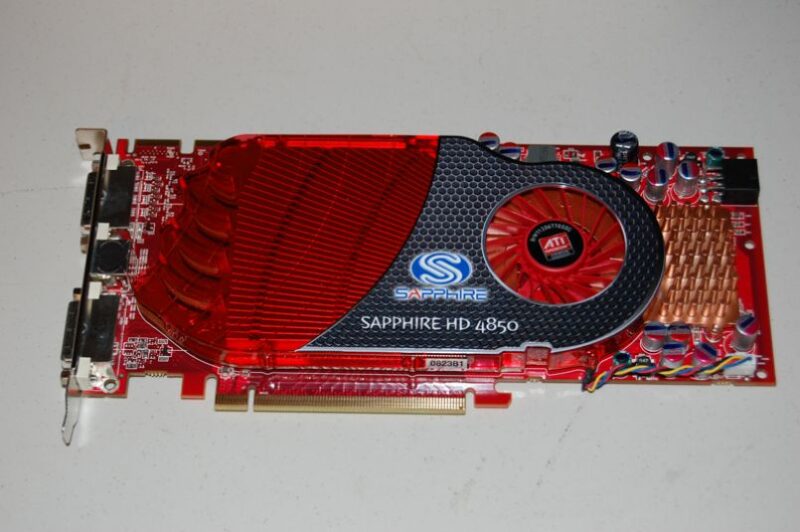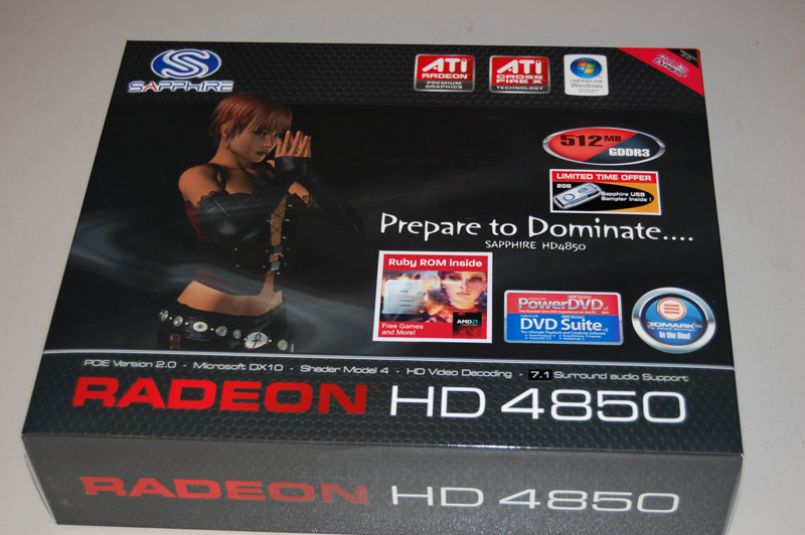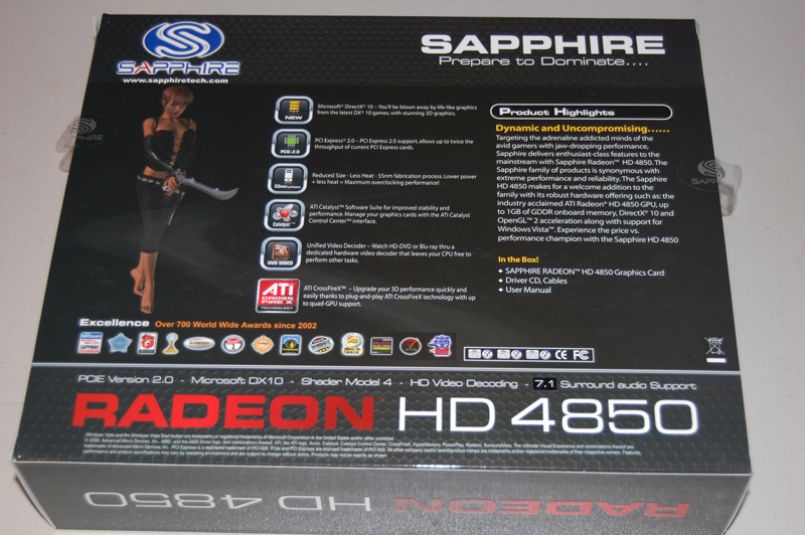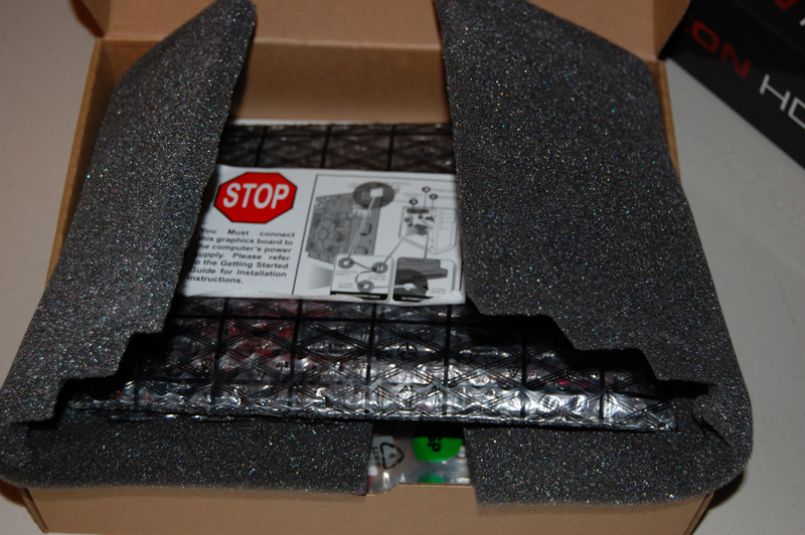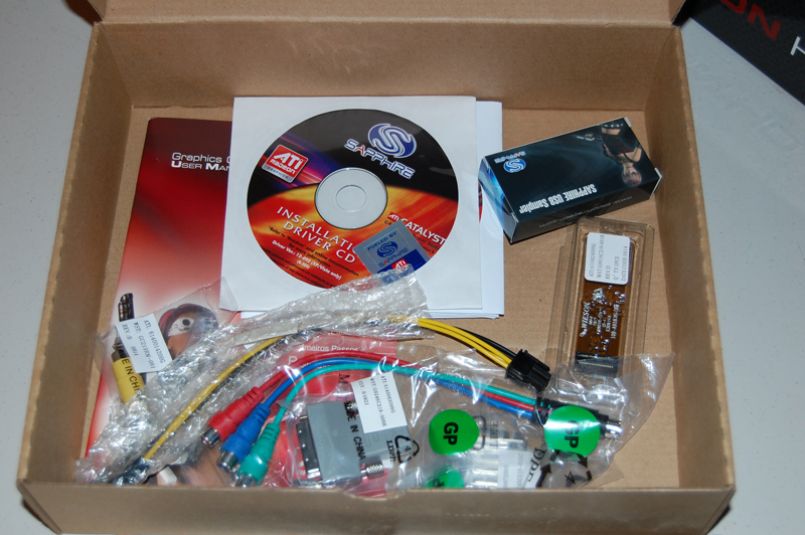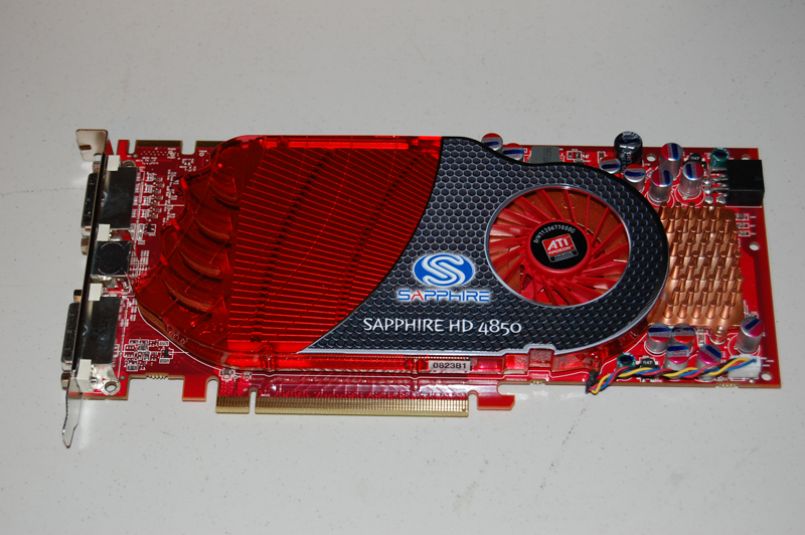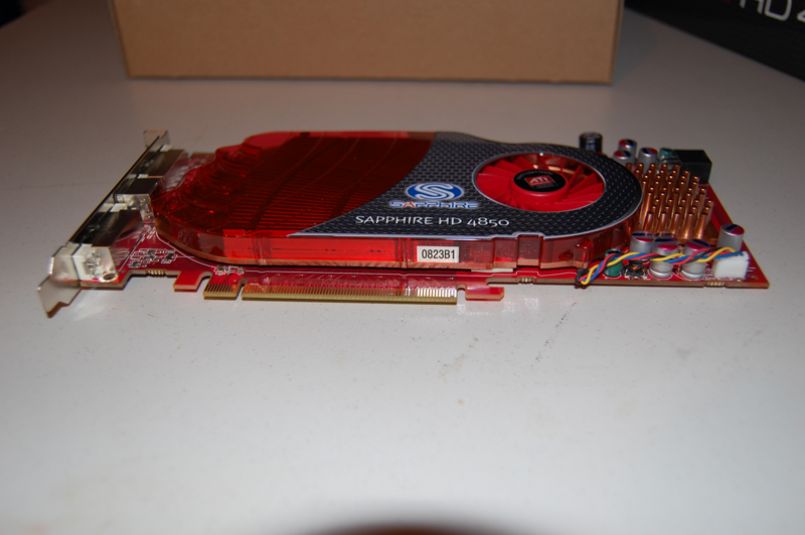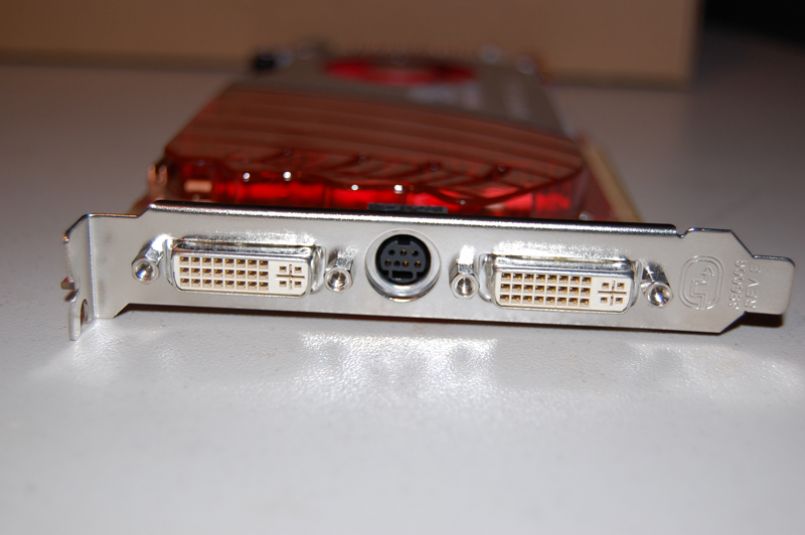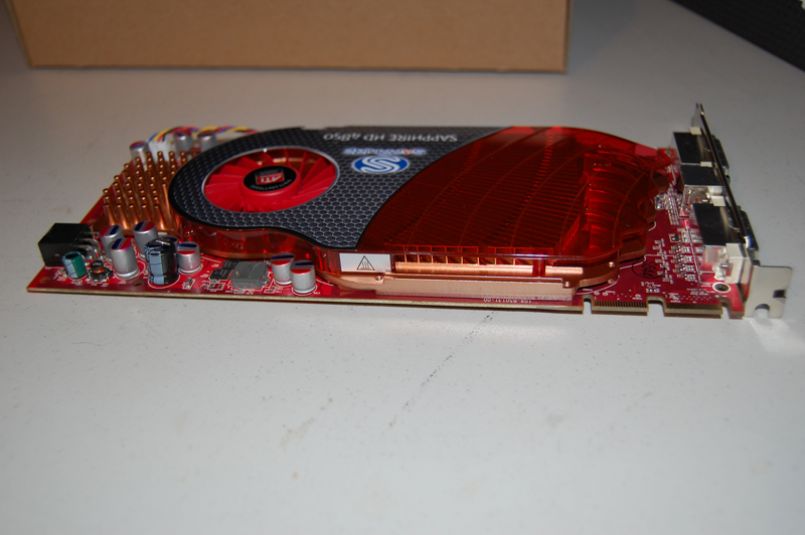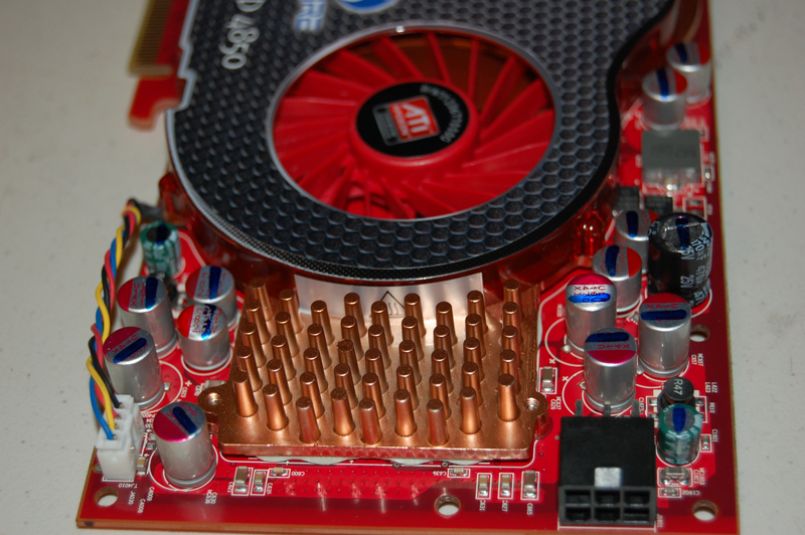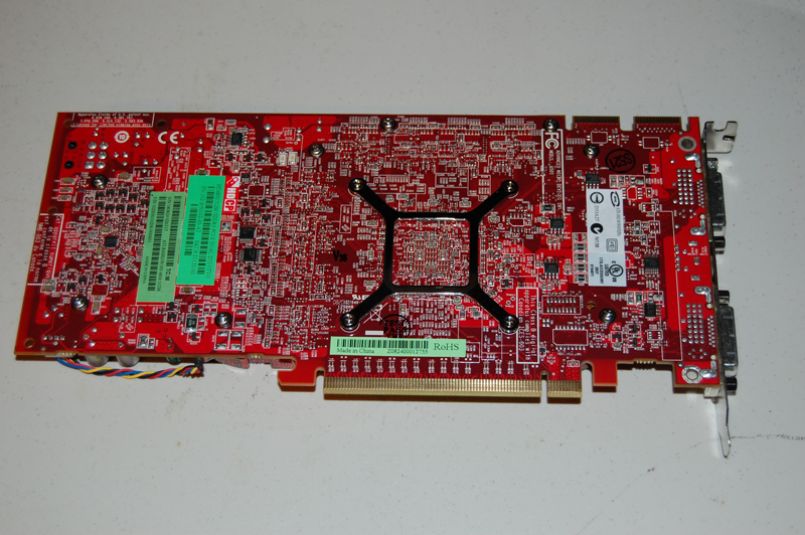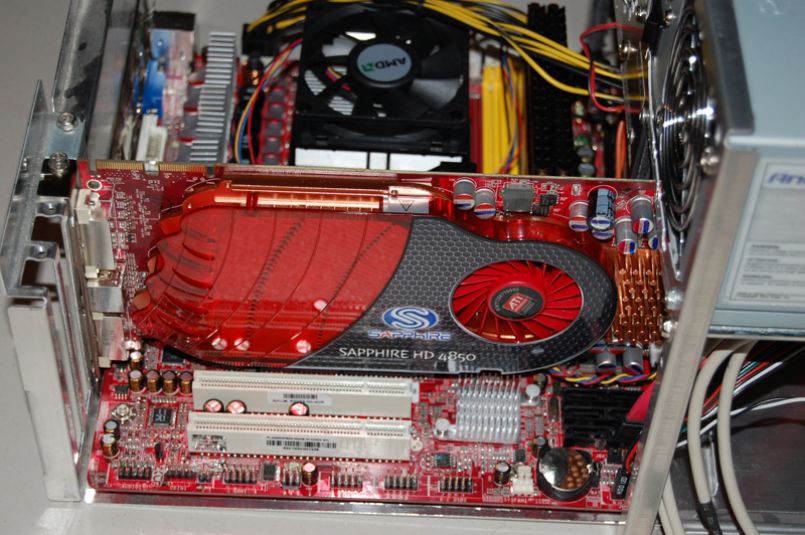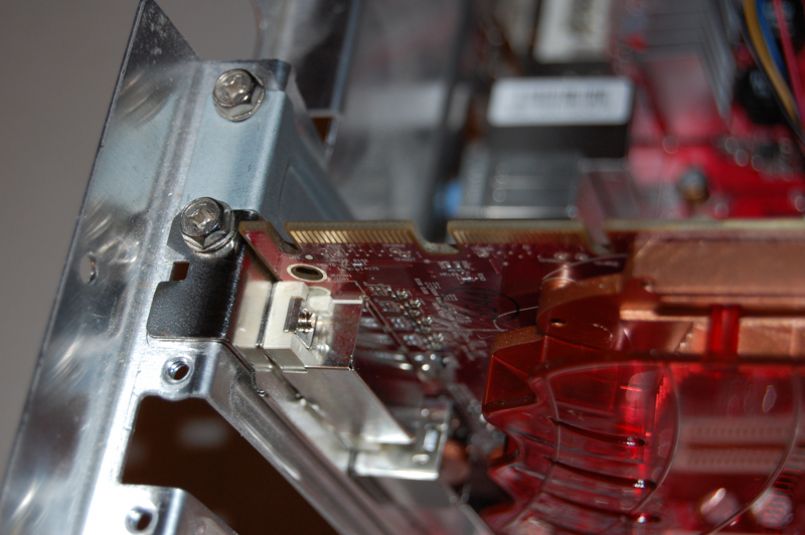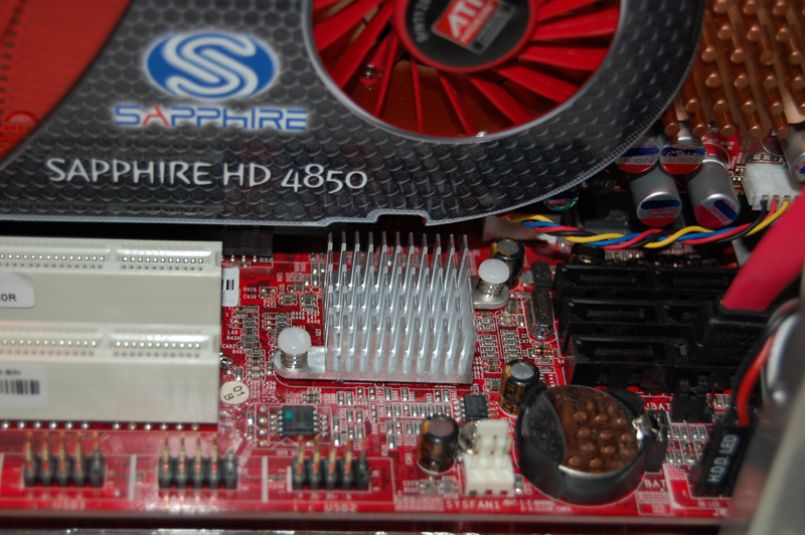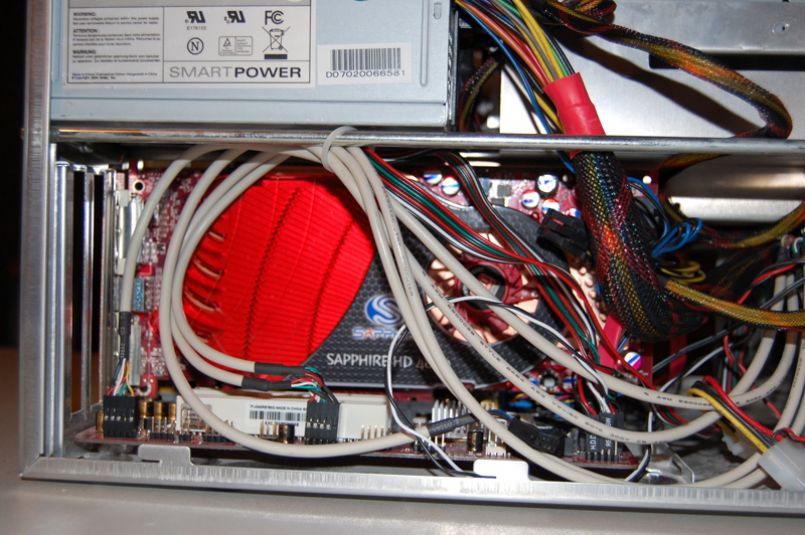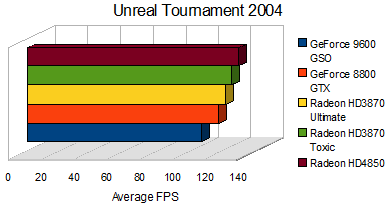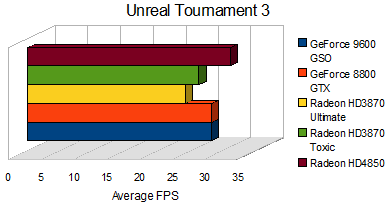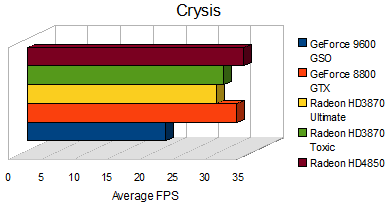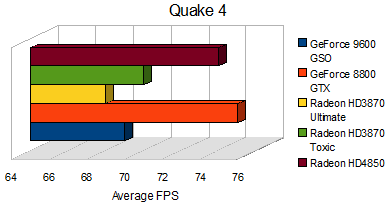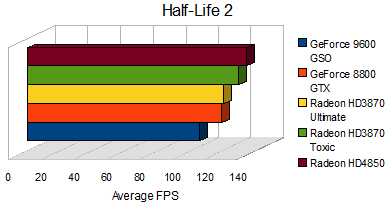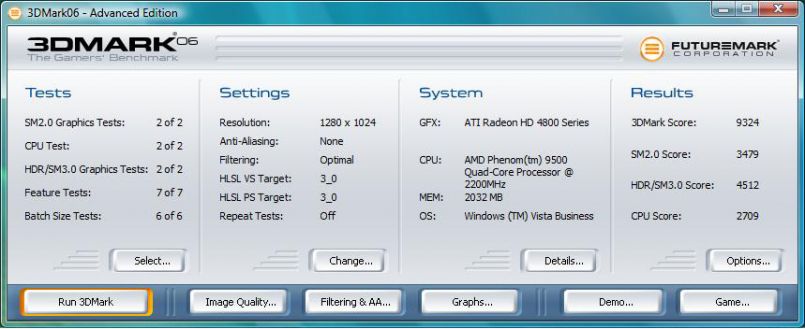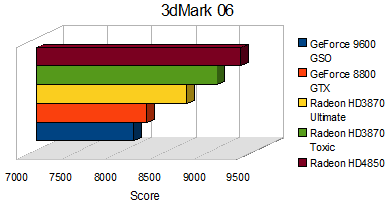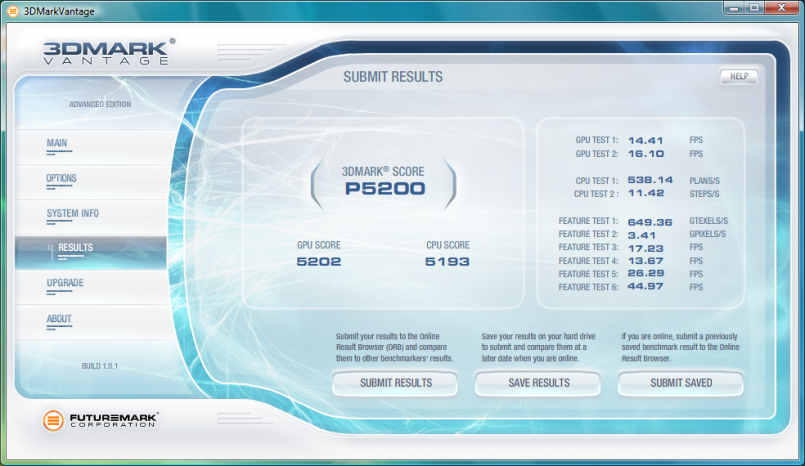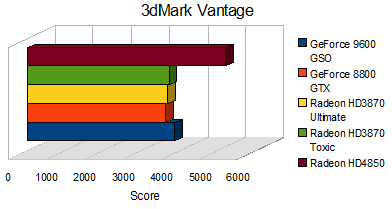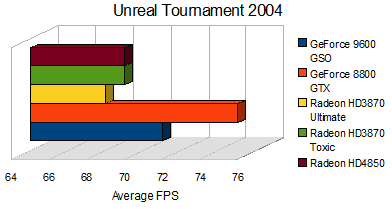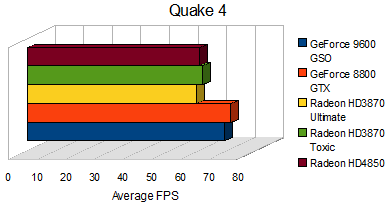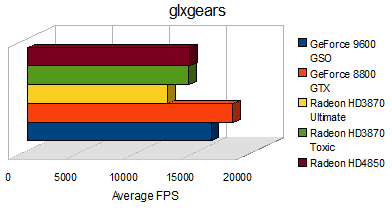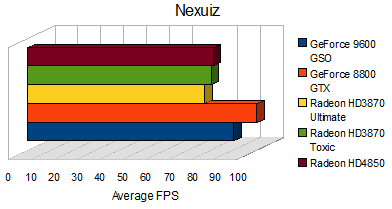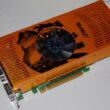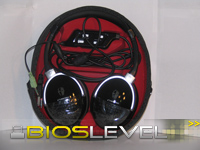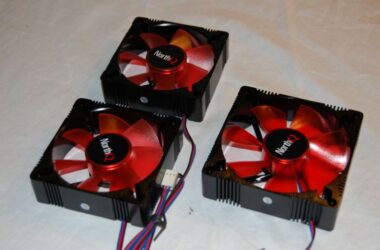Introduction
There’s always been a constant struggle between ATI and nVidia, and sometimes it’s felt like nVidia’s only been pulling farther and farther ahead since AMD’s acquisition of ATI. However, ATI has not only come back with the release of the new RV770 GPU, they’ve also managed to heighten the competition, pushing nVidia to lower their prices. The RV770 is built on a 55nm manufacturing process, which should provide better performance at lower temperatures.
Sapphire supplied us with one of their initial Radeon HD4850 videocards, which features 512MB of GDDR3 memory, CrossFireX support, and is probably one of the fastest cards we’ve looked at yet. The Sapphire Radeon HD4850 promises cutting-edge performance, but incredible multimedia processing capabilities as well.
About Sapphire
“Pioneers in a new era of how data is displayed and games are played, Sapphire shepherds the performance oriented with ground-breaking solutions to an environment that remains in a constant state of flux and ultimate evolution. For over ten years Sapphire has held true to its unwavering commitment, the commitment to deliver the most feature rich and soundly engineered products. Because of Sapphire’s firm position on achieving excellence with each product that leaves our ISO9001 and ISO14001 certified factories, you can rest assured that your customers will recognize YOUR commitment to selling only the highest of quality components.
“Sapphire is ATI’s largest and best performing partner World Wide” Dave Orton, CEO ATI
“Since ATI announced its manufacturing & distribution relationships with ODMs and AiBs in June of 2001, SAPPHIRE has been THE key ATI Graphics Boards Supplier worldwide and now stands poised and ready to capture the mainboard audience of those who seek a stable platform for their mission critical operations.”
Packaging
The Sapphire Radeon HD4850 comes packaged in the same size box we’ve come to expect from the majority videocard manufacturers. The card itself isn’t pictured on the front or back of the box, and a see-through display of the card is also missing. Not a big deal, since I’m just as happy looking at the attractive avatar.
One the front of the box, aside from Sapphire’s logo and the name of the card, the words “Prepare to Dominate…” stand out the most. This is exactly the phrase I’d like to put to the test with this card. Also on the front are the various features of the card, and some included accessories and software. The most surprising of these included accessories was the “Sapphire USB Sampler”, a 2GB USB drive.
The rear of the box goes over many of the features of the card, box contents, and the various awards Sapphire has received since 2002.
Opening the box up, I found the card packaging in an anti-static bubble-wrap bag, held safely in place by two pieces of foam on either side. Not quite the best packaging job I’ve come across, but far from the worst as well.
Under the foam and videocard were the various accessories that came with the Radeon HD4850: user manual, software, USB sampler, power cable, S-Video adapter, Component adapter, USB dongle, VGA dongle, and a CrossFire bridge. Aside from typical driver and DVD software, Sapphire has also included a game sampler and 3dMark06.
Appearance
Unlike the blue PCBs I saw on the Sapphire Radeon HD3870 Ultimate and Toxic, the Radeon HDHD4850 is on a red PCB. This is because this is the base Radeon HD4850 model, and AMD is unlikely to have licensed modifications or overclocks for this series yet.
The HD4850 has a single-slot cooling solution, so it’s not going to take up two PCI slots in my system. The heatsink itself is enclosed in plastic, and an ATI-branded fan cools the unit.
The Radeon HD4850 features dual dual-link DVI ports, each supporting up to a 2560×1600 resolution. The Radeon HD4850 also has an S-Video port capable of both S-Video output and HD component output.
The only areas where the heatsink is not enclosed by plastic are fan’s blowhole, and a side of the card that acts as a vent. The plastic enclosure creates a thermal chamber, which I would hope provides for improved cooling.
The heatsink is also exposed behind the fan, right by the unit’s 6-pin PCI-Express power connection.
The underside of the card reveals more circuitry than I’d ever have the patience to trace. Also of note here is the heatsink’s mounting bracket. It’s very small and rather thin, far from the massive mount I saw on Palit’s GeForce 9600 GSO Sonic.
Before installing the card, I’d like to give the features and specifications of the card a look-over.
Features & Specifications
The Radeon HD4850 is a brand-new series of cards, featuring a new GPU and 512MB of GDDR3 memory. That said, it can only be assumed that aside from improved performance, the Radeon HD4850 also brings new features to the table as well.
Features
- GDDR3 memory 256-bit memory interface
- DirectX 10.1
- 24x custom filter anti-aliasing (CFAA) and high performance anisotropic filtering
- ATI CrossFireXâ„¢ multi-GPU support for highly scalable performance
- Use up to four discrete cards with an AMD 790FX based motherboard
- PCI Express 2.0 support
- PCI Express 2.0 support
- Dynamic geometry acceleration
- Game physics processing capability
- ATI Avivo™HD video and display technology
- Unified Video Decoder 2 (UVD)
- ATI PowerPlay™ technology
- HDMI with 7.1 surround sound audio
While benefiting from a new 55nm manufacturing process, the Radeon HD4850 has several advantages over the HD3870 such as 7.1 audio over HDMI, and improved physics processing. Let’s look at the specifications of the unit to see the power providing these features.
Specifications
- Display Output: Dual DL-DVI-I+HDTV
- Core Clock: 625 MHz
- Memory Clock: 993MHz, 1986 MHz effective.
- PCI Express 2.0 x16 bus interface
- 512MB — 256bit GDDR3 memory interface
- Single Slot Active Cooler
- HDMI compliant via dongle
- 7.1 Au
dio Channel Support - Microsoft DirectX 10.1 support
- Shader Model 4.1 support
Surprisingly, the Radeon HD4850 is clocked slightly slower than the Radeon HD3870, but has roughly 50% more transistors. I hope benchmarks will reveal that the new manufacturing process has given the card a large advantage over the previous generation of cards and such a difference in clock speeds will mean nothing.
Installation
As with most videocards, installation was a snap. Press the card in, and screw in the PCI bracket to secure. Don’t forget the 6-pin PCI-Express power connection.
Unlike the Palit GeForce 9600 GSO, the Radeon HD4850 doesn’t block my SATA ports.
With the physical installation complete, all that was left to do was install the latest Catalyst 8.6 driver in both Linux and Windows. Both versions of the drive can be found on AMD’s website.
Benchmark Setup
I’ll be using the same system I’ve used in previous videocard reviews, and the system will be running both Windows Vista Business 64-bit with Service Pack 1 and Gentoo Linux 2008.0 64-bit. I’ll look at some of the latest games in Windows, and look at a few similar benchmarks in Linux including results from the Phoronix Test Suite.
| Component | Part | |
|---|---|---|
| Processor | AMD Phenom 9500 | |
| Motherboard | Sapphire PI-AM2RS780G 780G | |
| RAM | 2GB DDR2 PC2-8500 Reaper HPC CrossFire Certified | |
| Video Card | Sapphire Radeon HD4850 | |
| Chassis | X-Qpack | |
| CPU Cooling | Scythe Katana II | |
| Hard Drive | Excelstor 250GB SATA2 | |
| Power Supply | Antec SmartPower 500W Modular PSU | |
| Display | 1280×1024 | |
| Operating System | Windows Vista Business SP1 64-bit / Gentoo 2008.0 64-bit | |
That said, I’ll be able to compare the Radeon HD4850 directly against videocards I’ve reviewed previously. Let’s get started with the Windows benchmarks. I’ll be looking at performance in 3dMark06 and Vantage, Unreal Tournament 2004, Unreal Tournament 3, Crysis, Quake 4, and Half-Life 2.
Windows Benchmarks
I started off the benchmarking process with some of our typical gaming benchmarks. Once again, I’m testing with Windows Vista 64-bit with Service Pack 1. As we’ve seen with previous reviews, Windows Vista really hits hard when it comes to gaming performance. The 32-bit version shows decrease in FPS in most games, but the 64-bit version shows an even greater decrease. Many of these cards we test with are capable of much higher framerates, but, well… it’s 64-bit Vista.
Unreal Tournament 2004
Since a Linux port of Unreal Tournament 3 has yet to be released for Linux, I use Unreal Tournament 2004 as a benchmark to compare Linux and Windows performance from videocards and processors. Although an older game, the framerate is still a good determining factor of how good a videocard is. I tested Unreal Tournament 2004 with everything set the maximum settings, at our default resolution, 1280×1024. I’m also using the OpenGL rendering engine, as that is the only available engine in Linux.
Unreal Tournament 3
Despite there not yet being a Linux port, Unreal Tournament 3 is one of the latest PC games out and uses the powerful Unreal Engine 3. Games such as Bioshock, Turok, and others also use this engine, making Unreal Tournament 3 a great benchmark to give an idea how these games will perform as well.
Crysis
Is one of the latest, cutting-edge games. Additionally, Crysis has a 64-bit port whereas Unreal Tournament 3 does not. I found gameplay to be mostly unplayable with anything higher than the default medium settings. I’m attributing this to an issue with the 64-bit version of Vista. Microsoft’s 64-bit operating system just doesn’t seem ready for the prime time yet.
Windows Benchmarks, Continued
Quake 4
Like Unreal Tournament 2004, Quake 4 is a slightly older engine. It remains relevant in that many games still use the engine such as Doom 3 and Quake Wars, and it also has a Linux port. Quake 4 was benchmarked using the highest settings available.
Half-Life 2
Half-Life 2 remains one of the most popular game engines due to the various “Source” games Valve has released, such as Counter-Strike: Source. Additionally, many incremental updates have been added to the game with the episode-style updates Valve released for the game. Half-Life 2 was benchmarked with both Episodes installed, and all settings set to the maximum available.
3dMark06
The benchmark is about two years old now, but still an effective way to look at a video card’s performance.
3dMark Vantage
Futuremark’s latest gaming benchmark is the pinnacle of gaming benchmarks and technology, as it may very well bring any setup to its very knees. Through a series of DirectX 10.1, Physics, and CPU tests, 3dMark Vantage measures every ounce of performance that a system is capable of, in every area the latest games utilize.
Conclusion on Windows Benchmarks
What more is there to say beyond the fact that the Sapphire Radeon HD4850 blows past the competition? No, really. I wasn’t entirely sure what to expect from the card, especially in 3dMark Vantage after seeing the GeForce 9600’s performance a few days earlier. The extra transistors the Radeon HD4850 has over the Radeon HD3870 sure make a difference.
From older games such as Quake 4 and Unreal Tournament 2004, to the latest games such as Crysis and Unreal Tournament 3, the Radeon HD4850 offers numerous improvements. As ATI’s flagship series, the Radeon HD48xx series holds it
s own against ATI’s previous families, as well as against nVidia’s offerings.
Sapphire also included videos and wallpapers on the USB sampler that was included with the card, which all required Windows Media Player 9 or higher. I didn’t expect to find any games on the USB drive, but these were included with the “Ruby Rom 1.1” disc. All the games played as smoothly as I could imagine under Windows Vista 64-bit, but I imagine performance would have been better in a 32-bit environment.
Linux Benchmarks
As mentioned in previous reviews, I’m using Gentoo Linux 2008, mostly because I’m more comfortable in a Gentoo environment, but also because the software is compiled specifically to your machine’s specifications (or the best available for the machine, anyways). I’m still in a 64-bit environment, so benchmarks shouldn’t differ much from previous reviews.
For Linux, I’ll be look at Unreal Tournament 2004, Quake 4, glxgears, and Nexuiz. Nexuiz will be tested using the Phoronix Test Suite. The other games will be tested with the same settings as in Windows.
Unreal Tournament 2004
With the 64-bit version of UT2004 installed in Linux as well, I set the settings to the maximum and ran a botmatch on DM-Rankin.
Quake 4
Much like the Windows version, I had everything set to the maximum.
glxgears
glxgears is a simple benchmark included on most distros by default. Although not always a fantastic judge of performance, glxgears can give you a ballpark estimate on how well your video card will perform.
Nexuiz
Nexuiz is a popular open source first person shooter based on a modified (and very advanced) Quake 1 engine. Phoronix recently release a test suite, consisting of some of the benchmarks they commonly use when benchmarking hardware, and it’s all automated through PHP scripts. I opted to run Nexuiz through their benchmark system to standardize the results.
Conclusion on Linux Benchmarks
I didn’t entirely expect the Radeon HD4850 to play completely on par with the Radeon HD3870 in Linux. It’s kind of disappointing to see the performance I saw in Windows diminish so much in Linux. This makes me wonder if there’s an issue with AMD’s Linux driver that goes beyond just performance compared to Windows. For two different GPUs to score almost equally in most of our benchmarks makes it seem like there’s some kind of enforced cap on the Linux driver in terms of performance.
Those at AMD we’ve been priveleged to speak with have only told us that the Linux driver simply hasn’t been properly optimized, but a future release should correct this issue.
Regardless of these issues, the Radeon HD4850 did fall where I expected it to. Despite the performance gap in Windows against the nVidia family of cards, I did expect the Radeon HD4850 to fall behind these cards in Linux. As I’ve said many times before: nVidia’s Linux driver, while not perfect, is still superior to AMD’s.
Temperature & Noise
Since the X-Qpack is a small-form factor case, space is tight and wires are fairly abundant. The power supply is directly above videocard, and there’s a single 120mm fan on the rear of the case, in the corner opposite the videocard. Suffice to say, there isn’t a lot of cooling options. Although the 9600 GSO maintained respectable temperatures, I think a lot of it had to do with the dual-slot cooler.
The Radeon HD4850 runs idle at a whopping 65°C, and heats up to a burning 77°C under full load.
That is, it runs that hot until the firmware has been updated to the latest version. Production-ready samples should already have the latest firmware, but if not, get it. The new firmware significantly lowers temperatures to 42°C; at idle, and 56°C under a heavy load. That’s far better than what I saw before.
The fan on the HD4850 isn’t overfly loud. With the PC only about 2.5 feet away, the fan is barely audible. I’m sure if it was being used in a media center and connected to a TV, it wouldn’t cause much of an issue with noise. Performance and low noise output are definitely advantages of this card.
Final Thoughts & Conclusion
Honestly, the Radeon HD4850 has blown me away over the last week or so. While this card is not even the flagship of the HD 4800 series, the performance offerings are enough to attract me. Through our series of benchmarks, I saw the Radeon HD4850 beat the competition in Windows, and not fall far from the top score in Linux.
I would have liked to have seen some improved performance in Linux, but our friends at AMD have assured us that the issue is merely that the drivers haven’t yet been optimized for the new family of cards. Hopefully the next release will bring better performance, and the ability to distinguish the HD4850’s performance fromt he HD3870’s performance in Linux.
I would say that the Radeon HD4850 could give nVidia a run for their money, but recent events have already proven that it has. Since BIOSLEVEL.com is a little behind on publishing this review, we’ve already seen nVidia lower prices on several of their performance cards to stay competitive with AMD. The next few months should prove to be interesting as manufacturers add their own special touches and factory overclocking to this family of cards.
All in all, I have absolutely no complaints about the Sapphire Radeon HD4850. When paired with a Phenom quad-core CPU and 500W power supply, I’ve found no system instabilities, and the gaming performance is definitely there. I was a little afraid when I first tested the card and saw the high temperatures, but the update firmware corrected that issue. Once AMD optimizes the Catalyst Linux driver, I have no doubt this card may be able to give nVidia yet another run for their money, and this time in Linux… something that has never happened before.
Pros
- PCI-Express 2.0 Support
- 512MB GDDR3
- CrossFireX Supports up to four GPUs
- Runs relatively cool
- HDCP / HDMI compliant for watching HD movies on HD displays
- Free games and USB drive included
- Only takes up one slot
Cons
- ATI Linux driver still needs work




